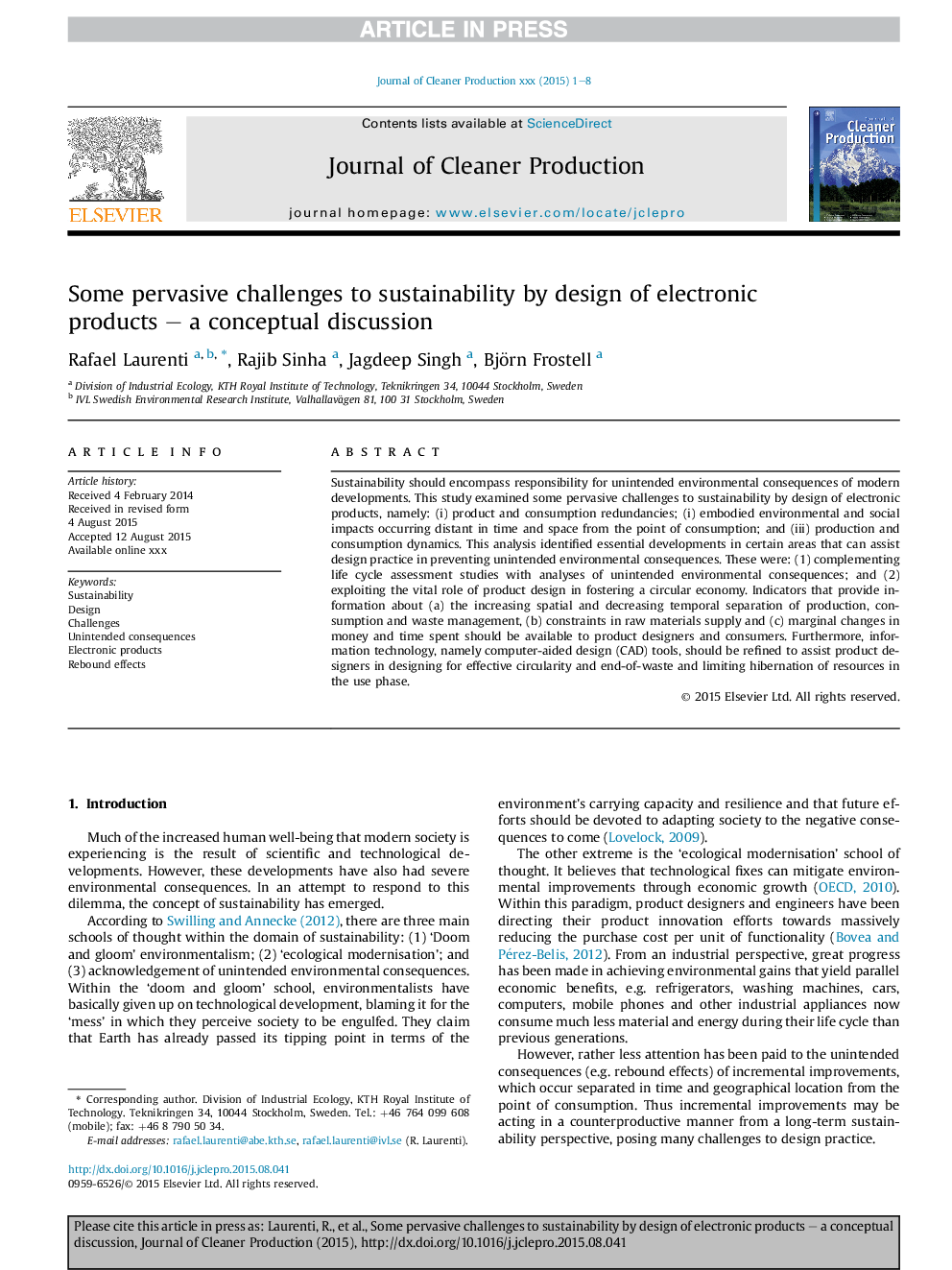| Article ID | Journal | Published Year | Pages | File Type |
|---|---|---|---|---|
| 10688162 | Journal of Cleaner Production | 2015 | 8 Pages |
Abstract
Sustainability should encompass responsibility for unintended environmental consequences of modern developments. This study examined some pervasive challenges to sustainability by design of electronic products, namely: (i) product and consumption redundancies; (i) embodied environmental and social impacts occurring distant in time and space from the point of consumption; and (iii) production and consumption dynamics. This analysis identified essential developments in certain areas that can assist design practice in preventing unintended environmental consequences. These were: (1) complementing life cycle assessment studies with analyses of unintended environmental consequences; and (2) exploiting the vital role of product design in fostering a circular economy. Indicators that provide information about (a) the increasing spatial and decreasing temporal separation of production, consumption and waste management, (b) constraints in raw materials supply and (c) marginal changes in money and time spent should be available to product designers and consumers. Furthermore, information technology, namely computer-aided design (CAD) tools, should be refined to assist product designers in designing for effective circularity and end-of-waste and limiting hibernation of resources in the use phase.
Related Topics
Physical Sciences and Engineering
Energy
Renewable Energy, Sustainability and the Environment
Authors
Rafael Laurenti, Rajib Sinha, Jagdeep Singh, Björn Frostell,
